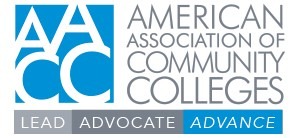- House approves Senate budget framework, with assurances
- Education Department announces new round of negotiated rulemaking
- AACC submits comments on the 2026-27 FAFSA
House approves Senate budget framework, with assurances
On Thursday, the House approved the Senate-adopted budget reconciliation framework in a near-party line vote (two Republicans joined all Democrats in voting no). This comes after months of negotiations within the House Republican Caucus and between House and Senate Republicans on the overall savings that must be accomplished by budget reconciliation. As a reminder, a budget reconciliation resolution must be approved by both the House and Senate, and it sets forth the overall spending or saving targets. After the resolution is adopted, each committee receives instructions, or a number, of savings that they must find. House Republicans had put forth their own budget resolution, calling for dramatic cuts in almost all mandatory areas to pay for extending the 2017 tax cuts and generating additional government savings. The House resolution included instructions to the House Education and Workforce Committee to find $330B in savings – which would necessitate significant and sector-changing cuts to student loan policy and Title IV more generally. The Senate took a much more measured approach, with their resolution putting in place instructions to find just $4B in savings overall. Notably, however, the figure in the budget resolution is only a floor – Congress can find additional savings. Ultimately, House leadership urged its members to vote in favor of the Senate resolution after receiving assurances from Senate Majority Leader John Thune (R-South Dakota) that the final reconciliation package will deliver $1.5T in savings. Now leadership will assign numbers to each committee and committee leaders in the House and Senate will move forward with proposals to meet savings targets for mandatory programs in their jurisdictions.
AACC is carefully monitoring the budget reconciliation process, as the resulting legislation will have major implications for community colleges and our students.
Education Department announces new round of negotiated rulemaking
Last week, the Department of Education (ED) announced that they will be holding a new round of negotiated rulemaking – the required process to promulgate new regulations for Higher Education Act (HEA) programs and policies.
While the announcement was light on details around specific policy areas, the notice seeks public feedback on “ways to streamline higher education regulations and federal assistance programs to create efficiencies for students, institutions, and key stakeholders, as well as ideas to improve the Public Service Loan Forgiveness Program, the Pay As You Earn (PAYE) Repayment plan, and the Income-Contingent Repayment (ICR) plan.”
To kick off the process, ED will host public hearings on April 29 and May 1. It will also accept written comments through the opens in a new windowFederal Register. AACC will participate in the public hearings and will raise opportunities to streamline existing processes that are burdensome for our colleges, including Return of Title IV Funds (R2T4).
AACC submits comments on the 2026-27 FAFSA
On Monday, the American Association of Community Colleges (AACC) submitted commentsopens PDF file on the 2026-27 Free Application for Federal Student Aid (FASFA), reflecting the experiences of financial aid officers at community colleges across the country.
The comments urge the Department to continue to clarify questions that students and contributors struggle with, improve the application process for students and contributors who have lived outside the United States or who do not have a Social Security Number, make optional any questions that are not related to determining a student’s dependency status or aid eligibility, further enhance skip logic to decrease incidences of conflicting information, and reinstate the House Choice Question to allow colleges to more accurately package aid.
